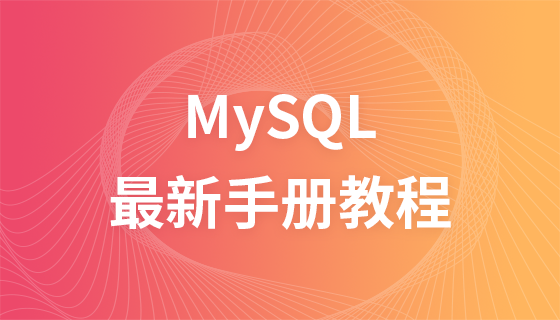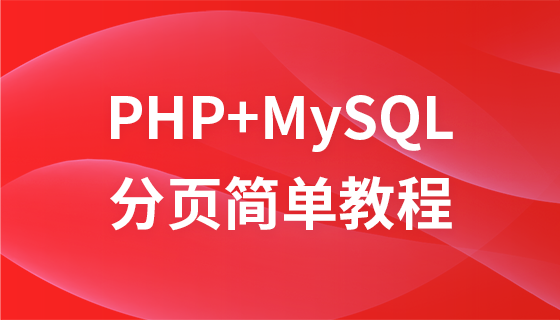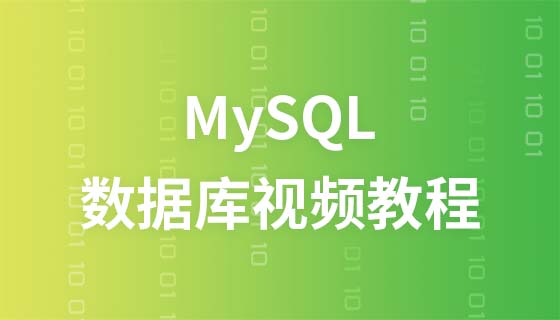PHPMyadmin是一款非常好用的数据库管理界面,尤其适合对数据库操作命令不熟悉的新手。其中PHPMyadmin也有很多的配置项,我们今天就来详解一下PHPMyadmin的配置文件,也可参考mysql数据库视频教程:MySql教程
phpmyadmin快速入门教程
PHPMyadmin配置文件config.inc.php内容如下,在需要设置的地方增加了相关注释。
下面我就说下怎么安装该工具:
1. phpmyadmin下载
先到网上下载phpmyadmin,再解压到可以访问的web目录下(如果是虚拟空间,可以解压后通过ftp等上传到web目录下),当然您可以修改解压后该文件的名称。
相关教程推荐:
1.《 phpMyAdmin最新下载安装视频教程》
2. mysql基础知识(mysql新手教程)
2. 配置config文件
打开libraries下的config.default.php文件,依次找到下面各项,按照说明配置即可:
A.访问网址
$cfg['PmaAbsoluteUri'] = '';
这里填写phpmyadmin的访问网址,如:$cfg['PmaAbsoluteUri'] = 'http://你的站点/phpmyadmin/';
B.mysql主机信息
$cfg['Servers'][$i]['host'] = 'localhost'; // MySQL hostname or IP address
填写localhost或mysql所在服务器的ip地址,如果mysql和该phpmyadmin在同一服务器,则按默认localhost
$cfg['Servers'][$i]['port'] = ''; // MySQL port - leave blank for default port
mysql端口,如果是默认3306,保留为空即可
C.mysql用户名和密码
$cfg['Servers'][$i]['user'] = 'root';
MySQL user 访问phpmyadmin使用的mysql用户名
fg['Servers'][$i]['password'] = '';
MySQL password (only needed对应上述mysql用户名的密码
D.认证方法
$cfg['Servers'][$i]['auth_type'] = 'cookie';
在此有四种模式可供选择:cookie,http,HTTP,config
01:config方式即输入phpmyadmin的访问网址即可直接进入,无需输入用户名和密码,是不安全的,不推荐使用。
02:当该项设置为cookie,http或HTTP时,登录phpmyadmin需要数据用户名和密码进行验证,
具体如下:
PHP安装模式为Apache,可以使用http和cookie;
PHP安装模式为CGI,可以使用cookie
E.短语密码(blowfish_secret)的设置
$cfg['blowfish_secret'] = '';
如果认证方法设置为cookie,就需要设置短语密码,置于设置为什么密码,由您自己决定 ,但是不能留空,否则会在登录phpmyadmin时提示错误 。
好了,到此为止,您已经成功安装了phpmyadmin,简单吧 ,赶快登录体验下吧
说明:
该文档说明的只是安装phpmyadmin的基本配置,关于config.default.php文件中各个配置参数的详细说明可以看其英文注释。
相关视频推荐:
1.《 phpMyadmin导入数据库sql文件的方法详解(附视频)》
2.《 phpMyadmin导出备份数据库文件的步骤详解(附视频)》
3.《 怎么使用phpmyadmin对数据库、数据表进行增删改查等操作?(图文+视频)》
详解版:
phpMyAdmin 就是一种 MySQL 数据库的管理工具,安装该工具后,即可以通过 web 形式直接管理 MySQL 数据,而不需要通过执行系统命令来管理,非常适合对数据库操作命令不熟悉的数据库管理者,下面详细说明该工具的安装方法。
一、下载
1、先到站点下载phpMyAdmin 安装包://m.sbmmt.com/xiazai/gongju/97(安装包含各种语言all-languages)
2、再解压到 web 可以访问的目录下,如果是虚拟空间,可以解压后通过 ftp 工具上传到 web 目录下,同时您可以修改解压后该文件的名称(你可以自定义目录名称)。
二、配置
3、打开/libraries/config.default.php文件(旧版本是根目录下的config.inc.php文件)
用写字板(不要用记事本,这是UTF8编码)进行编辑,按照说明配置即可。
4、查找$cfg['PmaAbsoluteUri']=‘';// 修改为你将上传到空间的phpMyAdmin的网址
如:$cfg['PmaAbsoluteUri'] =‘http: // 网站域名/phpmyadmin/';
5、查找$cfg['Servers'][$i]['host'] =‘localhost';// 通常用默认,也有例外,可以不用修改
6、查找$cfg['Servers'][$i]['auth_type'] =‘config';// 在自己的机子里调试用config;如果在网络上的空间用cookie.
在此有四种模式可供选择:cookie,http,HTTP,config
① config 方式即输入phpMyAdmin 的访问网址即可直接进入,无需输入用户名和密码,是不安全的,不推荐使用。
② 设置cookie,http,HTTP方式,登录 phpMyAdmin 需要数据用户名和密码进行验证。
具体如下:PHP 安装模式为 Apache,可以使用 http 和 cookie;PHP 安装模式为 CGI,可以使用 cookie。
7、查找$cfg['Servers'][$i]['user'] = ‘root';// MySQL用户名
8、查找$cfg['Servers'][$i]['password'] ='';// MySQL 密码 (only needed 留空就可以了)
9、查找$cfg['Servers'][$i]['only_db'] = '';// 你只有一个数据就设置一下,设置为你的数据库名;如果你想架设服务器,那么建议留空
10、查找$cfg['DefaultLang'] = ‘zh';// 这里是选择语言,zh代表简体中文的意思
11、查找$cfg['blowfish_secret'] ='';// 如果认证方法设置为cookie,就需要设置短语密码,设置为什么密码,由您自己决定,这里不能留空,否则会在登录 phpMyAdmin 时提示如下图所示的错误。
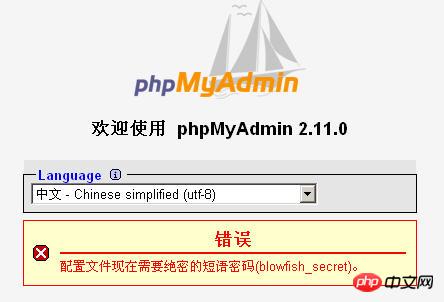
12、设置完毕后保存,现在可以上传到网络空间上了,浏览http://网站域名/phpmyadmin/测试一下。(输入数据库的用户名及密码就可以了)
三:常见问题
1. 如果要安装过程中出现:“phpMyAdmin - 错误 缺少 mysqli 扩展。请检查 PHP 配置。”错误。
解决方法如下:
①到phpmyadmin文件夹的\libraries\config.default.php文件中找:$cfg['Servers'][$i]['extension']='mysql';语句。
②如果有找到$cfg['Servers'][$i]['extension']='mysql';这句,就继续查找下面这句$cfg['Servers'][$i]['extension']='mysqli';并把其的注释去掉。
③如果没有找到$cfg['Servers'][$i]['extension']='mysql';这句,就把$cfg['Servers'][$i]['extension']='mysqli';语句,改成$cfg['Servers'][$i]['extension']='mysql';语句。(即确保 " mysql " 值能生效)
= 4.3.0)-----是否使用压缩协议,PHP版本须>= 4.3.0 $cfg['Servers'][$i]['controluser'] = ''; // MySQL control user settings // (this user must have read-only $cfg['Servers'][$i]['controlpass'] = ''; // access to the "mysql/user" // and "mysql/db" tables)-----MySQL控制用户设定,该用户只对mysql数据库下的user和db表有完全权限 $cfg['Servers'][$i]['auth_type'] = 'config'; // Authentication method (config, http or cookie based)?-----如果PHP安装模式为Apache,可以使用http和cookie;如果PHP安装模式为CGI,可以使用cookie;默认为config,是不安全的,不推荐。 $cfg['Servers'][$i]['user'] = 'root'; // MySQL user-----MySQL连接用户 $cfg['Servers'][$i]['password'] = ''; // MySQL password (only needed with 'config' auth_type)-----MySQL连接密码,建议在安装好PHP和MySQL后,先用phpmyadmin设定root密码,然后在这里填写 $cfg['Servers'][$i]['only_db'] = ''; // If set to a db-name, only // this db is displayed // at left frame // It may also be an array // of db-names-----如果在这里设定一个数据库的名字,那么登陆后框架左边将只显示这个数据库 $cfg['Servers'][$i]['verbose'] = ''; // Verbose name for this host - leave blank to show the hostname $cfg['Servers'][$i]['pmadb'] = ''; // Database used for Relation, Bookmark and PDF Features // (see scripts/create_tables.sql) // - leave blank for no support // DEFAULT: 'phpmyadmin' $cfg['Servers'][$i]['bookmarktable'] = ''; // Bookmark table // - leave blank for no bookmark support // DEFAULT: 'pma_bookmark' $cfg['Servers'][$i]['relation'] = ''; // table to describe the relation between links (see doc) // - leave blank for no relation-links support // DEFAULT: 'pma_relation' $cfg['Servers'][$i]['table_info'] = ''; // table to describe the display fields // - leave blank for no display fields support // DEFAULT: 'pma_table_info' $cfg['Servers'][$i]['table_coords'] = ''; // table to describe the tables position for the PDF schema // - leave blank for no PDF schema support // DEFAULT: 'pma_table_coords' $cfg['Servers'][$i]['pdf_pages'] = ''; // table to describe pages of relationpdf // - leave blank if you don't want to use this // DEFAULT: 'pma_pdf_pages' $cfg['Servers'][$i]['column_info'] = ''; // table to store column information // - leave blank for no column comments/mime types // DEFAULT: 'pma_column_info' $cfg['Servers'][$i]['history'] = ''; // table to store SQL history // - leave blank for no SQL query history // DEFAULT: 'pma_history' $cfg['Servers'][$i]['verbose_check'] = TRUE; // set to FALSE if you know that your pma_* tables // are up to date. This prevents compatibility // checks and thereby increases performance. $cfg['Servers'][$i]['AllowDeny']['order'] // Host authentication order, leave blank to not use = ''; $cfg['Servers'][$i]['AllowDeny']['rules'] // Host authentication rules, leave blank for defaults = array(); $i++; $cfg['Servers'][$i]['host'] = ''; $cfg['Servers'][$i]['port'] = ''; $cfg['Servers'][$i]['socket'] = ''; $cfg['Servers'][$i]['connect_type'] = 'tcp'; $cfg['Servers'][$i]['compress'] = FALSE; $cfg['Servers'][$i]['controluser'] = ''; $cfg['Servers'][$i]['controlpass'] = ''; $cfg['Servers'][$i]['auth_type'] = 'config'; $cfg['Servers'][$i]['user'] = 'root'; $cfg['Servers'][$i]['password'] = ''; $cfg['Servers'][$i]['only_db'] = ''; $cfg['Servers'][$i]['verbose'] = ''; $cfg['Servers'][$i]['pmadb'] = ''; // 'phpmyadmin' - see scripts/create_tables.sql $cfg['Servers'][$i]['bookmarktable'] = ''; // 'pma_bookmark' $cfg['Servers'][$i]['relation'] = ''; // 'pma_relation' $cfg['Servers'][$i]['table_info'] = ''; // 'pma_table_info' $cfg['Servers'][$i]['table_coords'] = ''; // 'pma_table_coords' $cfg['Servers'][$i]['pdf_pages'] = ''; // 'pma_pdf_pages' $cfg['Servers'][$i]['column_info'] = ''; // 'pma_column_info' $cfg['Servers'][$i]['history'] = ''; // 'pma_history' $cfg['Servers'][$i]['verbose_check'] = TRUE; $cfg['Servers'][$i]['AllowDeny']['order'] = ''; $cfg['Servers'][$i]['AllowDeny']['rules'] = array(); $i++; $cfg['Servers'][$i]['host'] = ''; $cfg['Servers'][$i]['port'] = ''; $cfg['Servers'][$i]['socket'] = ''; $cfg['Servers'][$i]['connect_type'] = 'tcp'; $cfg['Servers'][$i]['compress'] = FALSE; $cfg['Servers'][$i]['controluser'] = ''; $cfg['Servers'][$i]['controlpass'] = ''; $cfg['Servers'][$i]['auth_type'] = 'config'; $cfg['Servers'][$i]['user'] = 'root'; $cfg['Servers'][$i]['password'] = ''; $cfg['Servers'][$i]['only_db'] = ''; $cfg['Servers'][$i]['verbose'] = ''; $cfg['Servers'][$i]['pmadb'] = ''; // 'phpmyadmin' - see scripts/create_tables.sql $cfg['Servers'][$i]['bookmarktable'] = ''; // 'pma_bookmark' $cfg['Servers'][$i]['relation'] = ''; // 'pma_relation' $cfg['Servers'][$i]['table_info'] = ''; // 'pma_table_info' $cfg['Servers'][$i]['table_coords'] = ''; // 'pma_table_coords' $cfg['Servers'][$i]['pdf_pages'] = ''; // 'pma_pdf_pages' $cfg['Servers'][$i]['column_info'] = ''; // 'pma_column_info' $cfg['Servers'][$i]['history'] = ''; // 'pma_history' $cfg['Servers'][$i]['verbose_check'] = TRUE; $cfg['Servers'][$i]['AllowDeny']['order'] = ''; $cfg['Servers'][$i]['AllowDeny']['rules'] = array(); // If you have more than one server configured, you can set $cfg['ServerDefault'] // to any one of them to autoconnect to that server when phpMyAdmin is started, // or set it to 0 to be given a list of servers without logging in // If you have only one server configured, $cfg['ServerDefault'] *MUST* be // set to that server.[color]=red]-----是否显示所有的MySQL服务器 $cfg['ServerDefault'] = 1; // Default server (0 = no default server) $cfg['Server'] = ''; unset($cfg['Servers'][0]); /** * Other core phpMyAdmin settings */ $cfg['OBGzip'] = 'auto'; // use GZIP output buffering if possible (TRUE|FALSE|'auto')-----有必要的话是否使用GZIP输出缓冲 $cfg['PersistentConnections'] = FALSE; // use persistent connections to MySQL database-----是否使用MySQL持久连接,即pconnect $cfg['ExecTimeLimit'] = 300; // maximum execution time in seconds (0 for no limit)-----最大脚本执行时间,单位:秒 $cfg['SkipLockedTables'] = FALSE; // mark used tables, make possible to show // locked tables (since MySQL 3.23.30) $cfg['ShowSQL'] = TRUE; // show SQL queries as run-----运行查询时显示SQL查询语句 $cfg['AllowUserDropDatabase'] = FALSE; // show a 'Drop database' link to normal users-----是否对普通用户显示“删除数据库”连接 $cfg['Confirm'] = TRUE; // confirm 'DROP TABLE' & 'DROP DATABASE'-----删除数据表/库前是否出现确认提示框 $cfg['LoginCookieRecall'] = TRUE; // recall previous login in cookie auth. mode or not-----是否收回先前cookie认证模式的cookie $cfg['UseDbSearch'] = TRUE; // whether to enable the "database search" feature // or not $cfg['IgnoreMultiSubmitErrors'] = FALSE; // if set to true, PMA continues computing multiple-statement queries // even if one of the queries failed $cfg['VerboseMultiSubmit'] = TRUE; // if set to true, PMA will show the affected rows of EACH statement on // multiple-statement queries. See the read_dump.php file for hardcoded // defaults on how many queries a statement may contain! $cfg['AllowArbitraryServer'] = FALSE; // allow login to any user entered server in cookie based auth
2. 在日常开发中,有的人可能会不小心将我们www下的phpmyadmin给删除了,这时我们再通http://localhost/phpMyAdmin/访问我们的数据库就没办法访问了,页面会提示Not Found了,也就是文件不存在,我们已经删除了phpmyadmin怎么会存在呢?对吧!
第一步:
我们可以到phpmyadmin的官网来下载phpmyadmin进行安装
地址:https://www.phpmyadmin.net/
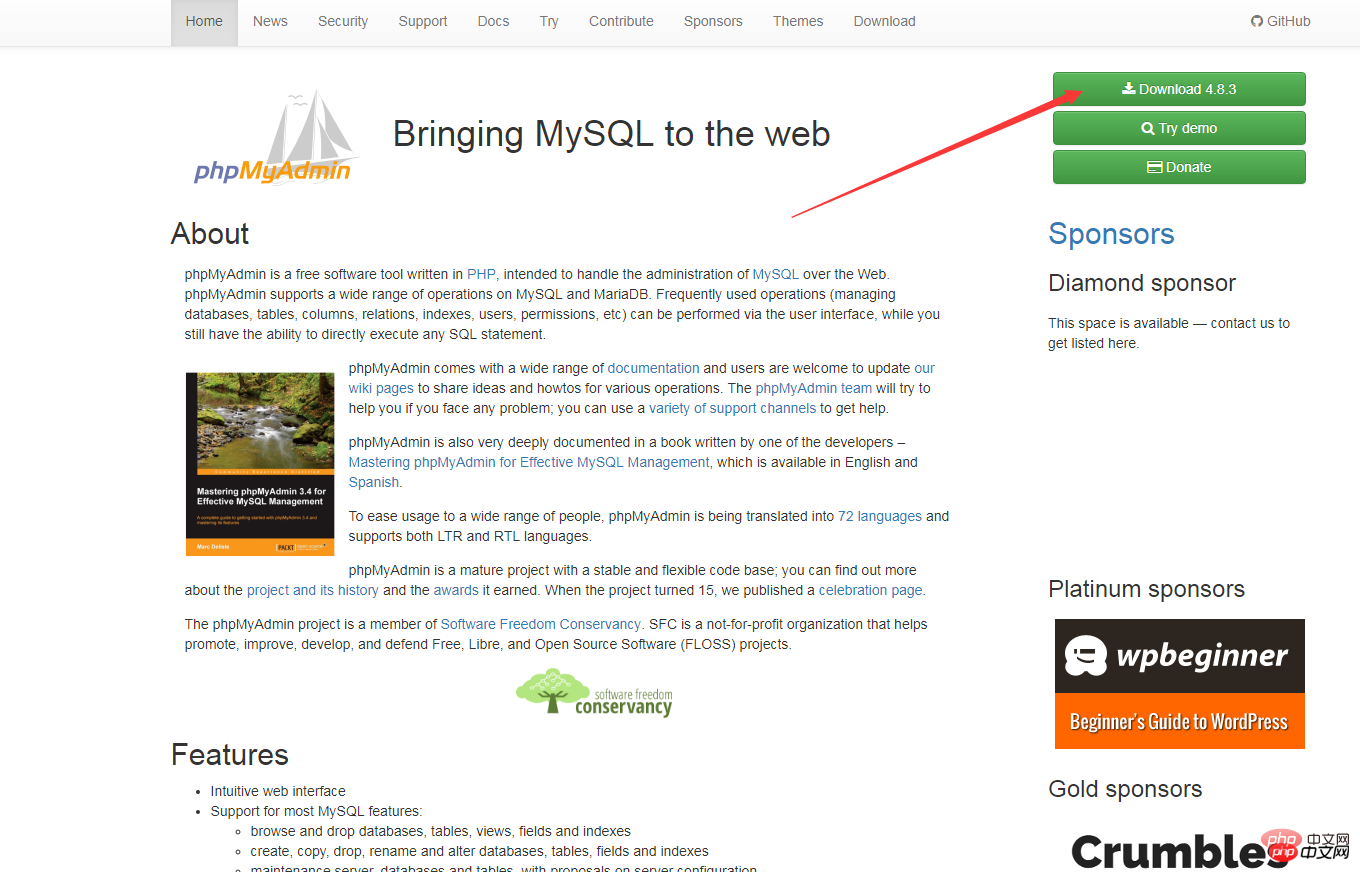
那么我们如何来重新下载安装呢?
第二步:
将解压到C盘根目录下,重命名为phpMyAdmin,进入该文件夹,找到config.sample.inc.php,改名为config.inc.php,编辑器打开改文件。找到下列代码
$cfg['blowfish_secret'] = ''
改为
$cfg['blowfish_secret'] = 'c4ca4238a0b923820dcc509a6f75849b';//一个长字符串密码就行
保存退出
第三步:
进入到环境中的apache的conf文件夹下,新建一个phpmyadmin.conf文件,代码编辑器打开,加入下列代码:
Alias /phpmyadmin "c:/phpMyAdmin/"Options Indexes FollowSymLinks MultiViews AllowOverride all Require all granted php_admin_value upload_max_filesize 128M php_admin_value post_max_size 128M php_admin_value max_execution_time 360 php_admin_value max_input_time 360
保存退出
第四步:
在该文件夹内找到配置文件httdp.conf,用文本编辑器打开,在末尾增加一行以下代码:
Include conf/phpmyadmin.conf
保存退出
第五步:最后一步将apache重启一下
这个时候我们再来访问http://localhost/phpmyadmin/已经恢复正常了!
相关推荐:
1. PHPMyAdmin中使用sql-parser进行SQL语法分析
2. phpmyadmin用法教程
3. MySQL可视化管理工具phpMyAdmin的学习
위 내용은 详解PHPMyadmin的配置의 상세 내용입니다. 자세한 내용은 PHP 중국어 웹사이트의 기타 관련 기사를 참조하세요!
